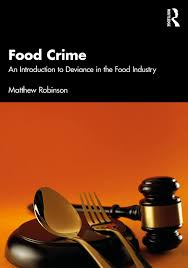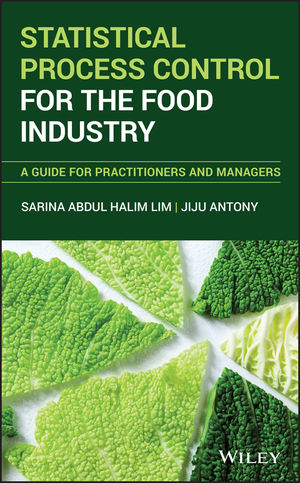Food Safety: There's a new sheriff in town
It is imperative that processors find out as much as they can about each GFSI audit standard before making a selection.

A great deal is happening in the world of food safety. FDA is preparing to issue the modernized GMP proposal. There is a draft proposal to modify acidified foods processing and evaluate processes, and a new food safety proposal affecting the entire industry is forthcoming. However, there’s a new sheriff in town, and that’s the Global Food Safety Initiative (GFSI). This program, driven by major retailers around the world, has the following objectives:
• Ensuring food safety
• Ensuring consumer protection
• Strengthening consumer confidence
• Benchmarking requirements of food safety management, and
• Improving cost efficiency.
Among the retailers that have been instrumental in forming GFSI are the UK’s Sainsbury’s and Tesco, France’s Carrefour, the Netherlands’ Royal Ahold and the United States’ Walmart. Since these companies and others involved are responsible for marketing huge quantities of consumer products, the program has grown rapidly since its formation in 2000.
To date, GFSI has approved six audit standards for food processors, each of which includes all of the elements defined by GFSI:
• BRC – British Retail Consortium
• SQF – Safe Quality Foods
• IFS – International Food Standard
• Dutch HACCP
• FSSC 22000, and
• Synergy 22000.
The objective of the GFSI audit approval process is to ensure equivalent audits. In other words, if one customer demands a particular audit scheme and another customer demands a different one, the processor should (in theory) be able to say it has met the GFSI requirement.
Which audit scheme is right for your company? Each scheme focuses on ensuring the production of safe foods by using the hazard analysis critical control point (HACCP) system, and includes prerequisite programs for HACCP.
However, each standard is slightly different in set-up and the basic requirements for certification. For example, in BRC, the guidance document states hands must be washed in about 113°F water.
Elements that companies should review include:
• Audit schedules – How often must the company be certified? Yearly? Every other year?
• The proscriptive nature of the audit – Will the company need to change procedures to meet the requirements?
• Training/internal certification – Does the company have to hire a consultant or be precertified?
• Time – How long will the program take for certification?
• Cost – How much will the program and certification cost?
It is imperative that processors find out as much as they can about each standard before making a selection. But reading literature on the certification steps is not enough. Processors should also talk to companies that have already completed the certification process about why they selected a certain standard and its value to them.
Far too many processors do not do their homework when selecting a standard. They either do what their customers ask or just select a standard. Since there are six approved standards, it should not matter which a processor selects; simply choose the one that is best for your company.

A great deal is happening in the world of food safety. FDA is preparing to issue the modernized GMP proposal. There is a draft proposal to modify acidified foods processing and evaluate processes, and a new food safety proposal affecting the entire industry is forthcoming. However, there’s a new sheriff in town, and that’s the Global Food Safety Initiative (GFSI). This program, driven by major retailers around the world, has the following objectives:
• Ensuring food safety
• Ensuring consumer protection
• Strengthening consumer confidence
• Benchmarking requirements of food safety management, and
• Improving cost efficiency.
Among the retailers that have been instrumental in forming GFSI are the UK’s Sainsbury’s and Tesco, France’s Carrefour, the Netherlands’ Royal Ahold and the United States’ Walmart. Since these companies and others involved are responsible for marketing huge quantities of consumer products, the program has grown rapidly since its formation in 2000.
To date, GFSI has approved six audit standards for food processors, each of which includes all of the elements defined by GFSI:
• BRC – British Retail Consortium
• SQF – Safe Quality Foods
• IFS – International Food Standard
• Dutch HACCP
• FSSC 22000, and
• Synergy 22000.
The objective of the GFSI audit approval process is to ensure equivalent audits. In other words, if one customer demands a particular audit scheme and another customer demands a different one, the processor should (in theory) be able to say it has met the GFSI requirement.
Which audit scheme is right for your company? Each scheme focuses on ensuring the production of safe foods by using the hazard analysis critical control point (HACCP) system, and includes prerequisite programs for HACCP.
However, each standard is slightly different in set-up and the basic requirements for certification. For example, in BRC, the guidance document states hands must be washed in about 113°F water.
Elements that companies should review include:
• Audit schedules – How often must the company be certified? Yearly? Every other year?
• The proscriptive nature of the audit – Will the company need to change procedures to meet the requirements?
• Training/internal certification – Does the company have to hire a consultant or be precertified?
• Time – How long will the program take for certification?
• Cost – How much will the program and certification cost?
It is imperative that processors find out as much as they can about each standard before making a selection. But reading literature on the certification steps is not enough. Processors should also talk to companies that have already completed the certification process about why they selected a certain standard and its value to them.
Far too many processors do not do their homework when selecting a standard. They either do what their customers ask or just select a standard. Since there are six approved standards, it should not matter which a processor selects; simply choose the one that is best for your company.
Looking for a reprint of this article?
From high-res PDFs to custom plaques, order your copy today!







